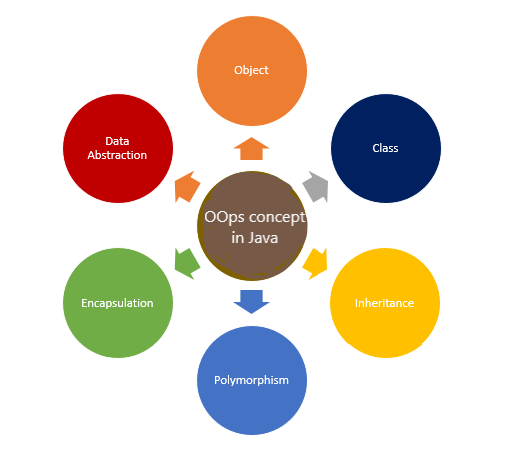Mastering Object-Oriented Programming (OOP) Concepts in Java
In the world of programming, Object-Oriented Programming (OOP) has become an integral part of software development. OOP offers a powerful and flexible approach to designing and organizing code. Java, being one of the most popular programming languages, embraces OOP principles at its core. In this blog post, we will delve into the key OOP concepts in Java and explore how they contribute to writing robust and maintainable code.
Encapsulation
Encapsulation is a fundamental concept in OOP that promotes data hiding and code modularity. In Java, encapsulation is achieved through the use of classes, which encapsulate data (attributes) and methods (behavior) into a single entity. By encapsulating data, we ensure that it is accessed and modified only through predefined methods, providing better control over the data’s integrity.
For example, let’s consider a class representing a car. We can encapsulate the car’s attributes (such as make, model, and year) and define methods to access and modify them, ensuring data consistency and encapsulation.
Inheritance
Inheritance enables code reuse and establishes a hierarchical relationship between classes. In Java, classes can inherit properties and behaviors from other classes using the “extends” keyword. The class being inherited from is called the superclass or parent class, while the inheriting class is known as the subclass or child class.
Inheritance allows subclasses to inherit the attributes and methods of the superclass and add additional functionalities or override existing ones. This concept promotes code reusability, extensibility, and the creation of specialized classes.
For instance, we can have a superclass called “Animal” and derive subclasses like “Cat” and “Dog.” The subclasses inherit common properties and behaviors from the superclass while adding specific characteristics unique to each animal.
Polymorphism
Polymorphism refers to the ability of objects to take multiple forms. In Java, polymorphism is achieved through method overriding and method overloading. Method overriding occurs when a subclass provides its implementation for a method already defined in its superclass. This allows the same method to exhibit different behaviors in different classes.
On the other hand, method overloading involves defining multiple methods with the same name but different parameters within a single class. The compiler determines which method to invoke based on the arguments passed during the method call.
Polymorphism enhances code flexibility, extensibility, and modularity. It enables us to write generic code that can handle different types of objects, providing a more elegant and maintainable solution.
Abstraction
Abstraction focuses on creating a simplified representation of complex systems by hiding unnecessary details. In Java, abstraction is achieved through abstract classes and interfaces. Abstract classes cannot be instantiated but can contain abstract methods, which are declared but not implemented. Concrete subclasses must provide implementations for these abstract methods.
Interfaces, on the other hand, define a contract that a class must adhere to by implementing its methods. By using abstraction, we can define common behavior and enforce a consistent structure among related classes without worrying about specific implementations.
Abstraction helps in building modular systems, facilitating code maintenance, and promoting code reuse.
Composition
Composition is a concept that involves building complex objects by combining simpler objects. It allows one class to contain an instance of another class as a member variable, forming a “has-a” relationship. The composed class can then utilize the functionalities of the contained objects.
Composition promotes code reusability, flexibility, and modularity by creating relationships between objects that can be easily changed or replaced. It enables the construction of complex systems by assembling smaller, independent components.
For example, in a banking system, a Bank class may have a composition relationship with a Customer class, where the Bank contains instances of Customer objects.
Association
Association represents a relationship between two or more classes, indicating that objects of one class are connected to objects of another class. It can be a “has-a” or “uses-a” relationship. Unlike composition, association does not imply ownership or containment.
Association can be implemented through member variables, method parameters, or return types. It allows objects to interact and collaborate with each other, enabling the creation of more complex systems.
For instance, in a university system, a Student class may be associated with a Course class, indicating that a student is enrolled in a course.
Interface
An interface is a blueprint of a class that defines a set of methods without providing their implementation. It establishes a contract that a class must adhere to by implementing all the methods defined in the interface.
In Java, interfaces enable multiple inheritance, where a class can implement multiple interfaces. They provide a way to achieve abstraction and define common behavior across unrelated classes.
Interfaces are widely used to define APIs, allowing different classes to adhere to a common set of methods. They facilitate loose coupling, making code more maintainable and adaptable.
Polymorphic References
Java allows objects to be referred to by reference variables of their superclass or interface types. This concept is known as polymorphic references. It enables writing code that can operate on objects of different subclasses interchangeably, as long as they inherit from the same superclass or implement the same interface.
Polymorphic references enhance code flexibility, allowing for easier code modifications and extensions. It promotes code reuse and simplifies the design of systems that need to handle various types of objects.
Understanding and applying object-oriented programming (OOP) concepts in Java is crucial for developing robust and maintainable software. The concepts of encapsulation, inheritance, polymorphism, and abstraction empower developers to write modular, reusable, and flexible code.
By encapsulating data, we protect it from unauthorized access and modifications. Inheritance enables code reuse and hierarchical organization of classes. Polymorphism allows different objects to exhibit different behaviors through method overriding and overloading. Abstraction helps create simplified representations of complex systems.
Java’s support for OOP concepts makes it a versatile language for building scalable and maintainable applications. By leveraging these concepts effectively, developers can design elegant solutions that are easier to understand, extend, and maintain.

